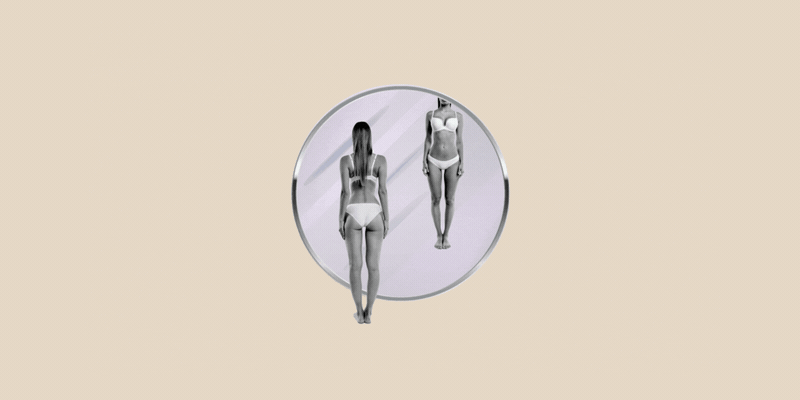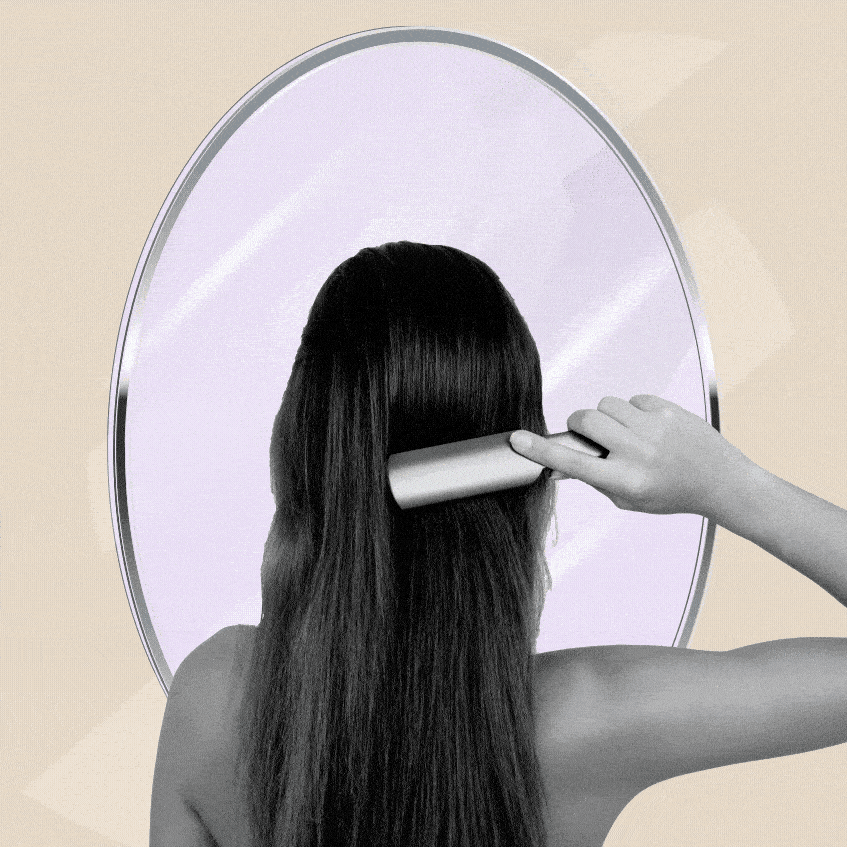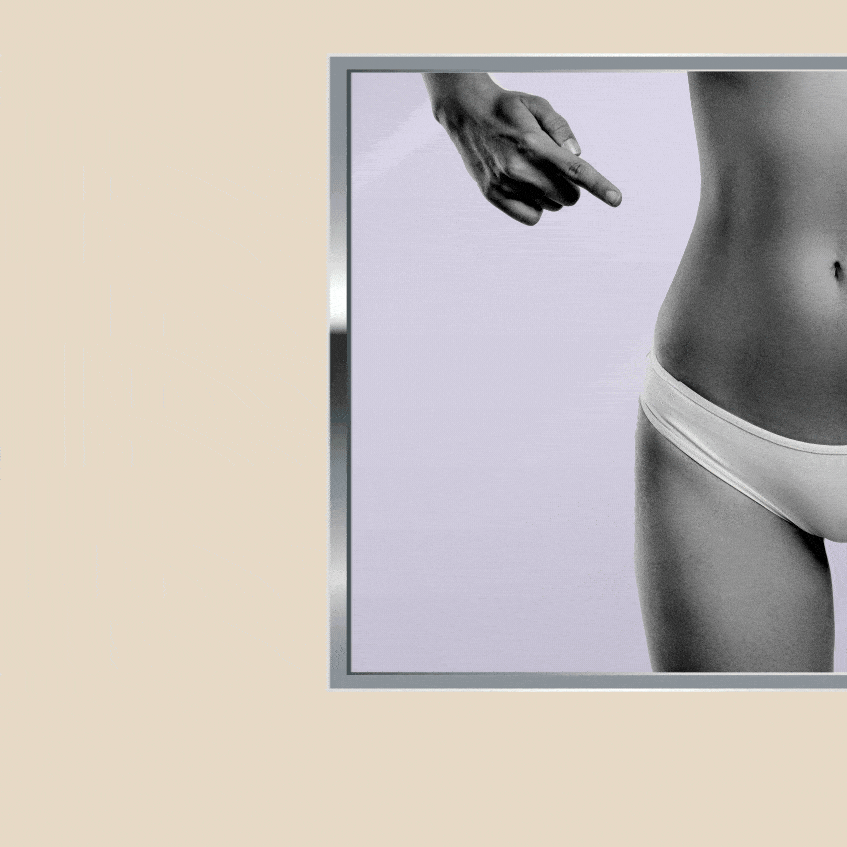"Negative thoughts about my appearance were so overpowering I couldn't leave the house"

"Standing in front of the mirror I dragged my hairbrush through my fringe. Still doesn't look right. Do it again. I reached for my towel and headed back to the bathroom. I was supposed to meet my friends at the cinema two hours ago, but if they saw me like this – my hair like this – they'd think bad things about me. I'd already washed, dried and styled my hair four times that morning, but I turned on the shower nozzle again and sighed. Hopefully this time my hair will turn out right.
My Body Dysmorphic Disorder (BDD) symptoms started out subtly as a child. I was always anxious, particularly about the way my clothes looked – to start out with. If there were marks on my clothes I'd have a tantrum. I'd pull them off as if they were on fire. Then I became transfixed by my hair. Then my nose. Then my skin. I'd spend hours checking my appearance in the mirror, repeatedly trying to change the way I looked until things were just 'right'. But nothing ever was.
From the moment I woke up, to the moment I went to sleep, my mind whirred with the same thoughts over and over. I worried that people would judge me for how I looked, but I was equally as worried that they were judging me because I cared about how I looked. I really couldn't win. Some days the thoughts were so overpowering, I couldn't leave the house. Everyone around me just thought I was going through a phase. Something I'd grow out of. I didn't."
Despite showing signs of BDD (also known as Body Dysmorphia) from a young age, Kitty Wallace didn't receive a diagnosis until she was 19-years-old, after a family friend saw a documentary on TV about the condition. Before then, doctors had assumed she was suffering with obsessive compulsive disorder (OCD) – a condition which she tells us is closed linked to BDD, sometimes resulting in misdiagnosis.
Now aged 34 and the Head of Operations at the BDD Foundation, Kitty is campaigning to challenge people's perception of this misunderstood condition, and raise awareness of how the signs and symptoms of BDD can manifest differently from person to person. She hopes that by sharing her story, others suffering with the condition will have a better understanding of BDD and feel confident enough to come forward – something she wishes she'd been able to do all those years ago.

"With BDD, there’s still so much misunderstanding," she says. "A lot of people just assume that BDD is the same thing as an eating disorder – to do with weight and shape – but, while there can be crossover with disordered eating, usually for those living with BDD there is a specific focus on changing a particular feature. It’s more about what you see when you look in the mirror and how you think other people are perceiving this."
What are the signs and symptoms of Body Dysmorphic Disorder?
"Body Dysmorphic Disorder is characterised by a preoccupation with one or more perceived defects or flaws in appearance, which are unnoticeable to others," says Dr Rob Willson, a trustee of the BDD Foundation. "It causes significant levels of distress and can dramatically impair a person's ability to function in their social, home or work lives."
Explaining the first signs and symptoms of BDD to look out for, Dr Willson tells us they usually see the "person spending more and more time thinking about, being distressed about and carrying out behaviours related to their appearance."
The areas of body the individual is concerned about in BDD can vary greatly the expert adds, pointing out that the condition affects people of all genders. "The most common areas of concern are skin, nose, hair, eyes, chin, lips and overall body build," Dr Willson notes. "However, any part of the body can become a focus."
As for what can trigger BDD, the doctor says this can develop due to a number of factors. "Appearance-related bullying and teasing can be a common trigger, as can the appearance changes we go through in adolescence," Dr Willson tells us. "People who have experienced physical, emotional or sexual abuse are also more vulnerable to BDD," he continues, adding that: "There's also some evidence that people who have high levels of 'aestheticality' – a detailed eye for beauty – may be more likely to develop BDD."
Do I have Body Dysmorphic Disorder?
I feel preoccupied with concerns about my appearance for more than an hour a day
I experience substantial amounts of emotional difficulty (like shame and anxiety) when I think about my appearance
The thoughts I have about my appearance leave me struggling to function either at home, at work, at school or in my social life (or in all of these areas)
If you relate to any of these three symptoms – which make up the requirements that someone needs to meet in order to be diagnosed with BDD – speak to your GP as soon as possible, or reach out to the BDD Foundation for advice on how to approach your GP, get support and learn more about the condition through the foundation's body dysmorphia test.
"All of our volunteers have lived experience and understanding of BDD, so they can be really helpful to chat with if you’re feeling nervous about seeking support," Kitty tells us. "Our volunteers can advise you on how to approach your GP as well as share resources you can take with you incase they aren't familiar with BDD or its treatments."
What does recovery from Body Dysmorphic Disorder look like?
Speaking about the types of treatment available for those diagnosed with BDD, Dr Willson tells us that cognitive behavioural therapy (CBT) is the primary go-to. He points out that some people are also offered a high-dose of selective serotonin reuptake inhibitor (SSRI) antidepressants, but that medication is not always the right choice for everybody.
"In CBT we help people understand how their BDD works, how to reduce their preoccupation with their appearance and to reclaim their lives," he explains. "Often, part of this is facing fears and typically avoided situations, while reducing behaviours like mirror-checking or concealing of perceived flaws with clothing or makeup."

Sharing her own experience of recovery, Kitty says that it’s important to remember that recovery looks different for everyone, and that one person's recovery shouldn't be compared to another's. "I’ve spoken about my BDD a few times and on one hand people can feel very inspired by my journey to recovery, but at the same time others will compare their recovery and think, 'Oh, I must not have recovered enough, they’re doing better than me'," she tells us. "It can become another thing to fixate on and bully yourself about."
For Kitty, recovery has been "up and down" – which she says is often the case for BDD sufferers. "The recovery process isn't always smooth, but that's not something to be scared of," she adds. "I've had relapses with my BDD over the years, but I've also found a huge amount of relief from BDD. I used to worry about my appearance all day, and then it would end up in my dreams at night, too, so I had no respite from it. Now I have been able to move past this exhaustive way of being."
This article is not intended to be a substitute for professional medical advice or diagnosis. Always seek the advice of your physician or other qualified health provider with any questions you may have regarding a medical condition.
You Might Also Like

